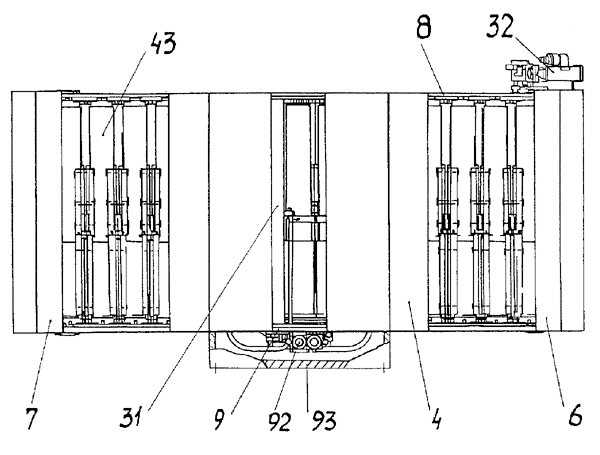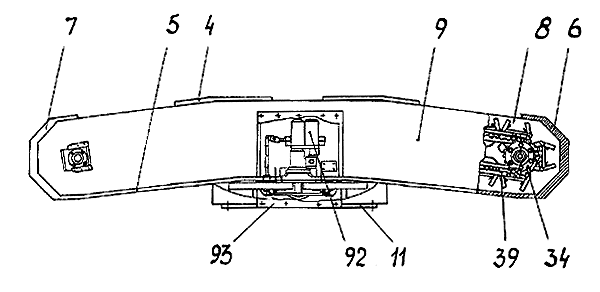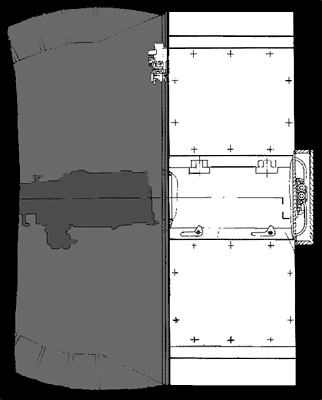Black Eagle (Obiekt 640) Autoloader
The disadvantages of carousel-based autoloaders of the Soviet tanks are fairly evident:
- The ammunition is placed inside the fighting compartment and by the very nature of the design can neither be satisfactorily protected nor equipped with efficient blast venting measures. The autoloader is also susceptible to accidental damage by the crew.
- The round follows a fairly complex path during loading, which reduces the loading speed and increases the risk of malfunction, especially if a round or autoloader are noncompliant due to damage or misalignment.
- Placement of autoloader under the turret ring prevents decreasing the height of the tank and lowering crew placement.
- The carousel autoloader layout puts serious limitations on the dimensions of the rounds that can be accomodated. The capacity of the autoloader is also limited due to an inefficient storage of cylindrical ammo.
- Replenishing the autoloader is a slow and hard task, due both to its location and the weight and fragility of the modern rounds.
To address these issues, a new bustle-mounted autoloader/magazine has been developed. It has the following highlights:
- The autoloader module is mounted outside the fighting compartment, and is at
all times isolated from it. This both protects the interior in case of the ammunition fire, and increases autoloader reliability.
- In the event of the ammunition fire blowout panels allow to control it and prevent it from damaging the interior of the tank.
- The loading cycle consists of a single ramming movement without the need for any complex trajectory.
- The autoloader has a simple and rugged design and allows to store substantial amount of ammunition due to efficient placement. Adapting the autoloader for different artillery systems is straightforward.
- The autoloader realizes the "rifle clip" concept - the entire depleted autoloader module is meant to be replaced by a new one by means of the dedicated transloader vehicle, facilitating extremely fast replenishment of ammunition and allowing to quickly address the autoloader malfunction. There is also provision for replenishing it one round at a time by the crew should the need arise.
The autoloader is described in the Russian patent RU 2195617 C1
Autoloader Schematics
 |
Top view: 4.Roof; 6,7.Side armor walls; 8,9.Front and rear walls; 31.Cross-beam; 32.Electric drive; 43.Ammo cassette frame; 92.Rammer; 93.Rammer and stopper housing.
|
 |
Rear view: 4.Roof; 5.Bottom; 6,7.Side armor walls; 8,9.Front and rear walls; 11.Ramming trough housing; 34.Drive sprocket; 39.Chain; 92.Rammer; 93.Rammer and stopper housing.
|
Operation
Following the activation of the electric drive 32, the chain 39 starts rotating in one of the directions depending on the proximity of the next round of a given type; the chain rotates until the cassette with the selected round is in the low-central position, above the loading trough. The round is then released into the trough, and is rammed by the chain rammer through the port in the front autoloader wall, the hatch in the rear turret wall, along the loading guide and into the gun. The rammer then retracts and the gun is ready to fire.
Specifications:
Capacity 30 rounds of 125mm ammunition
Cycle time 3-4 sec
 This page is © 1999-2005, Vasiliy Fofanov.
This page is © 1999-2005, Vasiliy Fofanov.




